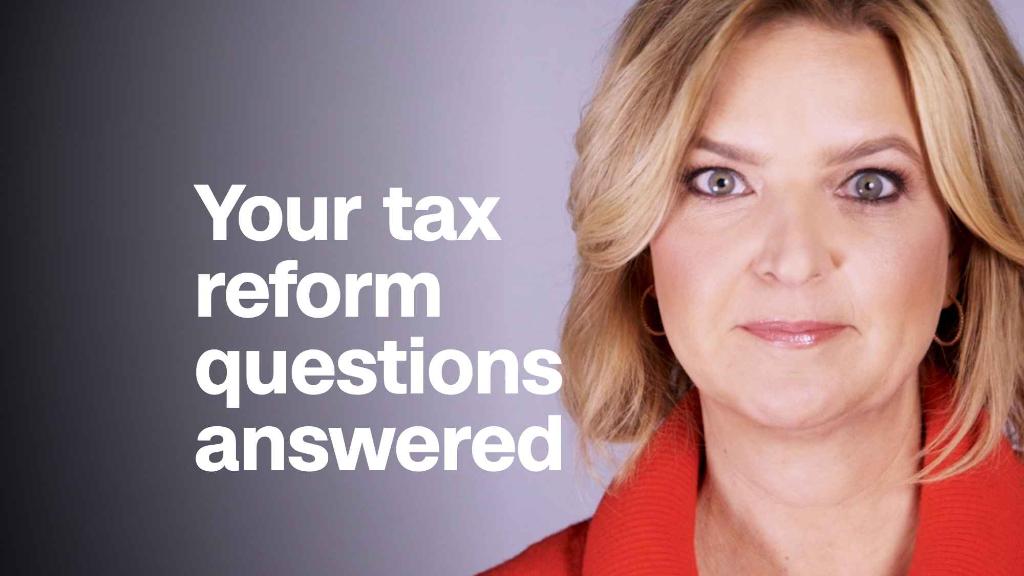
Putting a $10,000 cap on state and local tax deductions was one of the most controversial changes in the federal tax overhaul that was just signed into law.
It's been so controversial, in fact, that high-tax states, which feel unfairly targeted, may try to find a way around it when their legislatures start their spring sessions in the coming weeks.
"This tax provision hits the blue states by eliminating the state and local tax deductibility and uses that money to finance the tax cut in the red states," said New York State Gov. Andrew Cuomo on CNN's "New Day." Cuomo has said he is looking for ways to redesign the New York tax code to counter this "federal assault."
The thinking is if filers can't deduct the state and local taxes they pay in excess of $10,000 on their federal returns, states like New York, California, New Jersey and Illinois may try to let them get the full deduction anyway -- just by different means.
And those means involve using loopholes created by the hastily passed law.
Allowing filers to make charitable contributions to their states
One possible strategy that tax experts expect states to consider is letting filers make a charitable contribution to their state in exchange for a tax credit and then deduct that contribution on their federal return, since the new law doesn't cap deductible charitable contributions unless it exceeds 60% of your adjusted gross income.
A basic way it might work is this: Say you pay $30,000 in state income and property taxes in 2018. You may only deduct $10,000 of that on your federal return. To help you preserve the deduction for the remaining $20,000, your state government lets you make a $20,000 charitable contribution to the state in exchange for a $20,000 tax credit on your state tax return.
But now you could claim a $20,000 charitable deduction on your federal return in addition to your $10,000 SALT deduc tion.
Related: Making sense of the new cap on state tax deductions
Making charitable contributions to states is already permitted under the Internal Revenue Code and filers may deduct the full amount on their federal returns even if they also get a tax benefit from their state for the contribution, according to Kirk Stark, a tax law professor at UCLA.
For instance, landowners who agree not to develop a portion of their property for conservation purposes might get a state tax credit worth 60% of the value of that conservation easement.
So if the easement is worth $100,000, a landowner takes a $60,000 state tax credit on top of a $100,000 federal tax deduction.
Expanding this type of benefit to state income taxes might raise legal questions if the charitable contribution is viewed as being made expressly for the purpose of reducing one's tax bill, according to Max Behlke, director of budget and tax at the National Conference of State Legislatures.
But Stark, who is providing technical assistance to California Senate leader Kevin de Leon in drafting a bill to mitigate the SALT cap, notes that there is a lot of precedent of the IRS and the courts supporting the full deductibility of charitable contributions to states in other circumstances where one might make the same argument.
Replacing income taxes with payroll taxes
Another option raised by tax experts: Some states may choose to move away from the income tax on wages to a state-based payroll tax paid by employers, which are still allowed to deduct those payments.
Your employer would essentially pay the taxes for you, and lower your pay by the same amount.
"[S]tates can shift from non-deductible, over-the-cap state income taxes to still-deductible, employer-side payroll taxes," 13 tax experts wrote in a paper exploring the various ways the new tax rules may be gamed.
One of them -- Daniel Hemel, an assistant professor of tax law at the University of Chicago -- offered an example of how it might work in Illinois, which imposes a 4.95% flat income tax.
"Of the next $100 I earn in wages, $4.95 will go to the state and $95.05 will go to me (before federal taxes). Now imagine if instead the state imposed a 5.208% payroll tax on employers. My employer would pay me $95.05 and then pay 5.208% x $95.05 = $4.95 to the state," Hemel wrote on Medium.
Related: How much you'd pay under the GOP tax overhaul depends on a million things
The process would be more complicated in states that impose a progressive income tax. And in any case it might be difficult to explain to employees why their wages are lower, even though the net effect on their take-home pay would be unchanged.
Cuomo on Wednesday, in his 2018 State of the State proposal, said "we will explore the feasibility of a major shift in tax policy, and are developing a plan to restructure the current income and payroll tax system, as well as create new opportunities for charitable contributions to support public programs."
Whatever New York and other states end up doing, the upshot for the federal government may be the same: The hundreds of billions of dollars that the SALT cap was estimated to raise may not materialize.
